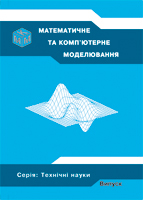Алгоритм опрацювання даних та компоненти спецпроцесора релейного захисту високовольтних ліній електропересилань
DOI:
https://doi.org/10.32626/2308-5916.2017-15.209-215Анотація
Викладена інформаційна технологія проектування структурних рішень спецпроцесора релейного захисту високовольтних ЛЕП. Систематизовані існуючі засоби релейного захисту на основі апаратних та програмно-апаратних мікропроцесорних контролерів цифрового захисту. Класифіковані компоненти спецпроцесора та обґрунтовані їх характеристики, орієнтовані на лінії електропересилань 6 кВПосилання
Кідиба В. П. Релейний захист електроенергетичних систем: навч. посібник. Львів: Видавництво Львівської політехніки, 2015. 504 с.
Люра О. П., Николайчук Я. М. Дослідження алгоритму розпізнавання накидів та коротких замикань у промислових електромережах. Матеріали IV Всеукраїнської школи-семінару молодих вчених і студентів ACIT’2014. Тернопіль: ТНЕУ, 2014. С. 157–158.
Патент 103938 Україна МПК Н02Н 9/00 (2015.01) Пристрій релейного захисту високовольтних ліній електропередач. Николайчук Я. М., Возна Н. Я., Люра О. П., Островка І. І., Сабадаш І. І. №u201505713; заявлено 09.06.2015; опубліковано 12.01.2016, Бюлетень №1/2016.
##submission.downloads##
Опубліковано
Номер
Розділ
Ліцензія
Authors who publish with this journal agree to the following terms:- Authors retain copyright and grant the journal right of first publication with the work simultaneously licensed under a Creative Commons Attribution License that allows others to share the work with an acknowledgement of the work's authorship and initial publication in this journal.
- Authors are able to enter into separate, additional contractual arrangements for the non-exclusive distribution of the journal's published version of the work (e.g., post it to an institutional repository or publish it in a book), with an acknowledgement of its initial publication in this journal.
- Authors are permitted and encouraged to post their work online (e.g., in institutional repositories or on their website) prior to and during the submission process, as it can lead to productive exchanges, as well as earlier and greater citation of published work (See The Effect of Open Access).

